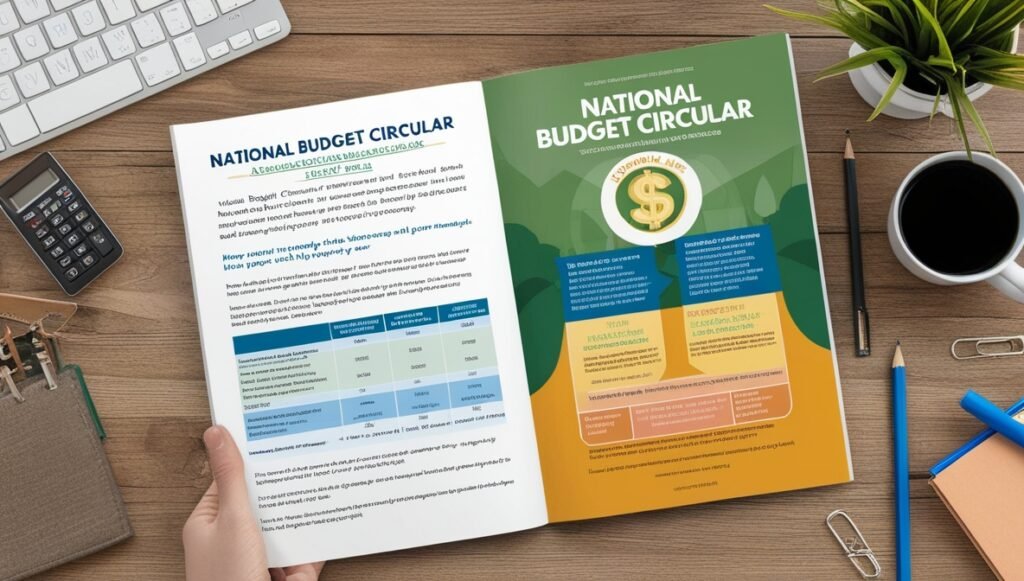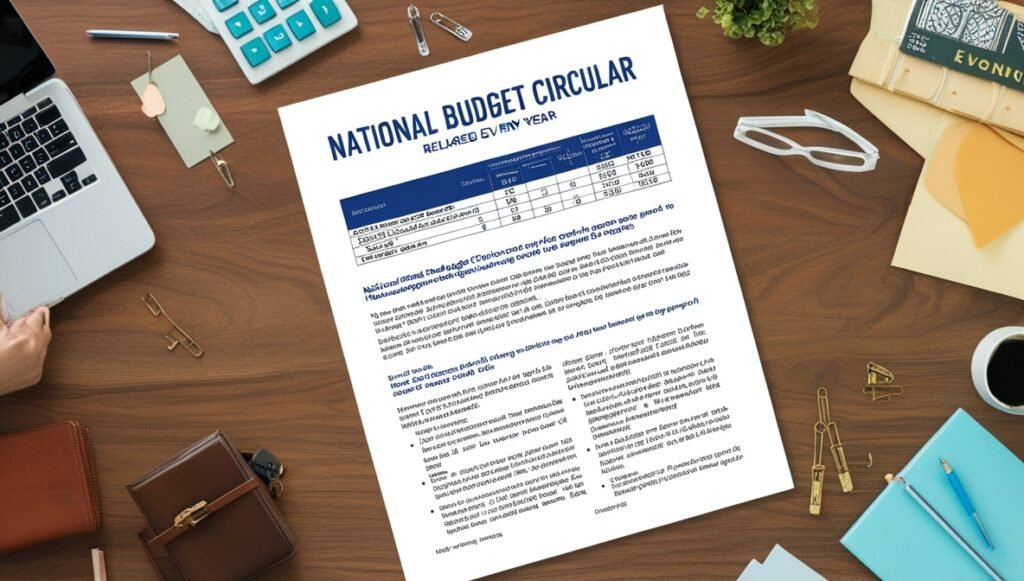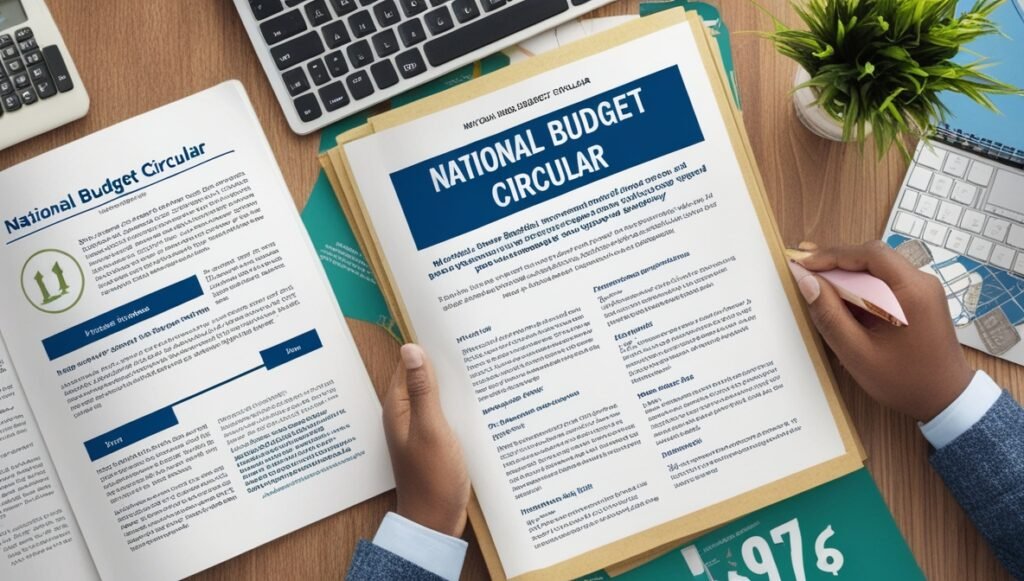National budget circular is an important document released by the government every year. National budget circular helps people, businesses, and government offices understand how money will be spent in the country. It explains the rules, policies, and plans about income, taxes, and spending. By reading the national budget circular, organizations can plan their finances properly. It is like a roadmap for money. People who work in offices, schools, and businesses use it to know how much they can spend and what rules they must follow. This circular also tells about changes in taxes or government programs. If you want to be prepared for the year ahead, knowing the details in the national budget circular is very helpful. Everyone from accountants to students can learn something useful from it.
The national budget circular is not just for experts; it is meant for everyone who wants to understand government spending. It shows how the government will collect money from taxes and how it will spend money on hospitals, schools, roads, and other services. By following the national budget circular, offices can make sure they spend money in the right way. It also helps businesses plan their future and decide how to manage their costs. Sometimes, the circular announces new rules that can affect employees, pensions, or company taxes. Reading the national budget circular carefully can save money and avoid mistakes. Many people ignore it because it looks complicated, but breaking it into small points makes it easy to understand. Knowing the national budget circular helps citizens understand where their money goes and how the country plans for growth.
National Budget Circular: A Complete Guide for Everyone

The national budget circular is an important document released by the government every year. It explains how the government will collect money and how it will spend it on different services like schools, hospitals, roads, and other projects. The national budget circular is used by government offices, businesses, and even citizens to understand rules about money. By reading this circular carefully, people and organizations can plan their finances properly and follow the rules without mistakes. It is a simple way to know how the country’s money will be managed.
The national budget circular also tells about changes in taxes, new programs, and policies for the year. It is a guide for offices to spend money correctly and for businesses to plan their budgets. Students, employees, and professionals can all learn from it because it explains government decisions in money matters. Understanding this circular can save money, avoid confusion, and help everyone follow the law correctly.
What is a National Budget Circular and Why It Matters
A national budget circular is a document released by the government every year. It is like a guidebook for money. It explains how money will be collected from taxes and how it will be spent in the country. Government offices, businesses, and schools use it to plan their expenses. The circular also provides rules that everyone must follow when handling money.
It matters because it helps people understand where the government is spending money and how new rules may affect their work or business. For example, if taxes increase or new programs are introduced, the circular explains them. Following the national budget circular ensures that organizations do not break the law or make financial mistakes.
Key Points You Should Know from the National Budget Circular
The national budget circular includes important points such as:
- Rules for collecting and spending money
- New taxes or changes in existing taxes
- How government departments should manage their budgets
- Guidelines for businesses and organizations
- Updates on pensions, allowances, and employee benefits
Knowing these points helps offices plan better and businesses make smart decisions. Even citizens can benefit by understanding how the government uses money to improve public services.
How the National Budget Circular Affects Businesses and Offices

Businesses and offices are directly affected by the national budget circular. It tells them about:
- Tax rates and deadlines
- New rules for financial reporting
- Allowances for employees
- Government incentives for certain industries
By following the circular, businesses can avoid fines and manage their costs. Offices also use it to plan projects and spending for the year. Ignoring it can lead to mistakes or legal issues, so it is important for everyone to read and understand it carefully.
Understanding Taxes and Spending Through the National Budget Circular
One of the main purposes of the national budget circular is to explain taxes and spending. Taxes are collected from citizens and businesses, and the government uses this money to run the country. The circular shows:
- How much tax people or companies need to pay
- Changes in tax rules or rates
- How government money will be spent on public services
By reading the circular, citizens can understand why taxes are important and how they contribute to schools, hospitals, roads, and other projects. Businesses can plan budgets and pricing strategies accordingly.\
Steps to Use the National Budget Circular in Your Daily Work
Using the national budget circular is simple if you follow these steps:
- Read the circular carefully and highlight important points.
- Note changes in taxes, spending, or policies that affect your work.
- Apply the rules in your office or business budget planning.
- Keep the circular for reference throughout the year.
- Share relevant information with your team or employees.
Following these steps ensures that you stay updated and compliant with government rules.
Common Mistakes to Avoid When Following the National Budget Circular
Many people make mistakes because the circular seems complicated at first. Common mistakes include:
- Ignoring updates and new rules
- Misunderstanding tax changes
- Spending without following guidelines
- Not sharing information with the team
Avoiding these mistakes can save money, prevent fines, and help businesses and offices run smoothly. Always take time to read and understand the circular thoroughly.
How Citizens Can Benefit from the National Budget Circular
Even citizens who are not in business or offices can benefit. The national budget circular:
- Explains government spending in simple terms
- Helps people understand taxes and allowances
- Shows which programs the government is funding
- Provides information on benefits like pensions or subsidies
By knowing this, citizens can make better financial decisions and understand where their taxes are going. It also promotes transparency and trust in government policies.
Updates and Announcements in the Latest National Budget Circular
Every year, the national budget circular brings updates. Some examples include:
- Changes in income tax or corporate tax rates
- New government programs or grants
- Adjustments in salaries, pensions, or allowances
- Policies to help businesses or promote investments
These updates are crucial for planning and decision-making. Reading the latest circular ensures you do not miss any important announcements.

Conclusion
The national budget circular is a simple yet powerful document. It guides offices, businesses, and citizens on how to handle money properly. By understanding its rules, updates, and guidelines, you can save money, avoid mistakes, and plan effectively. Everyone, from students to professionals, can learn from it. Staying informed about the national budget circular helps you be prepared for the year ahead and understand how the government uses resources for the country’s development.
FAQs
Q1: What is the main purpose of a national budget circular?
A1: Its main purpose is to explain government spending, taxes, and financial rules for offices, businesses, and citizens.
Q2: Who should read the national budget circular?
A2: Government offices, businesses, employees, and even citizens who want to understand financial rules should read it.
Q3: How often is the national budget circular released?
A3: It is usually released once a year, before the start of the financial year.